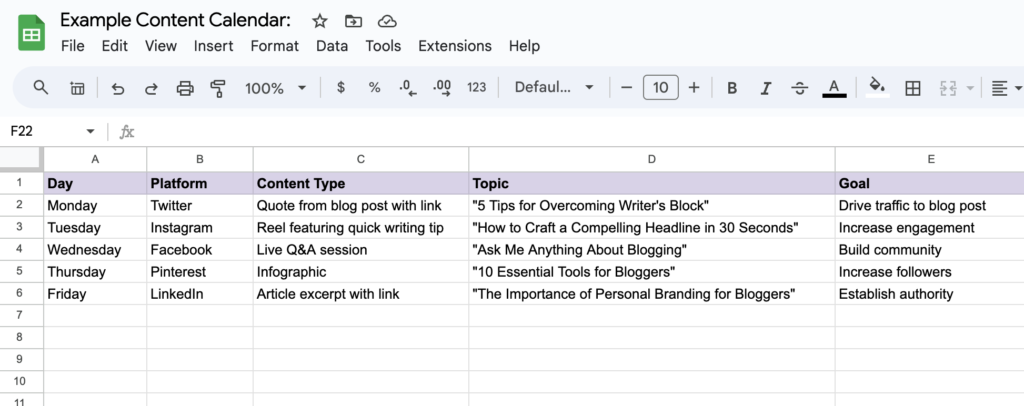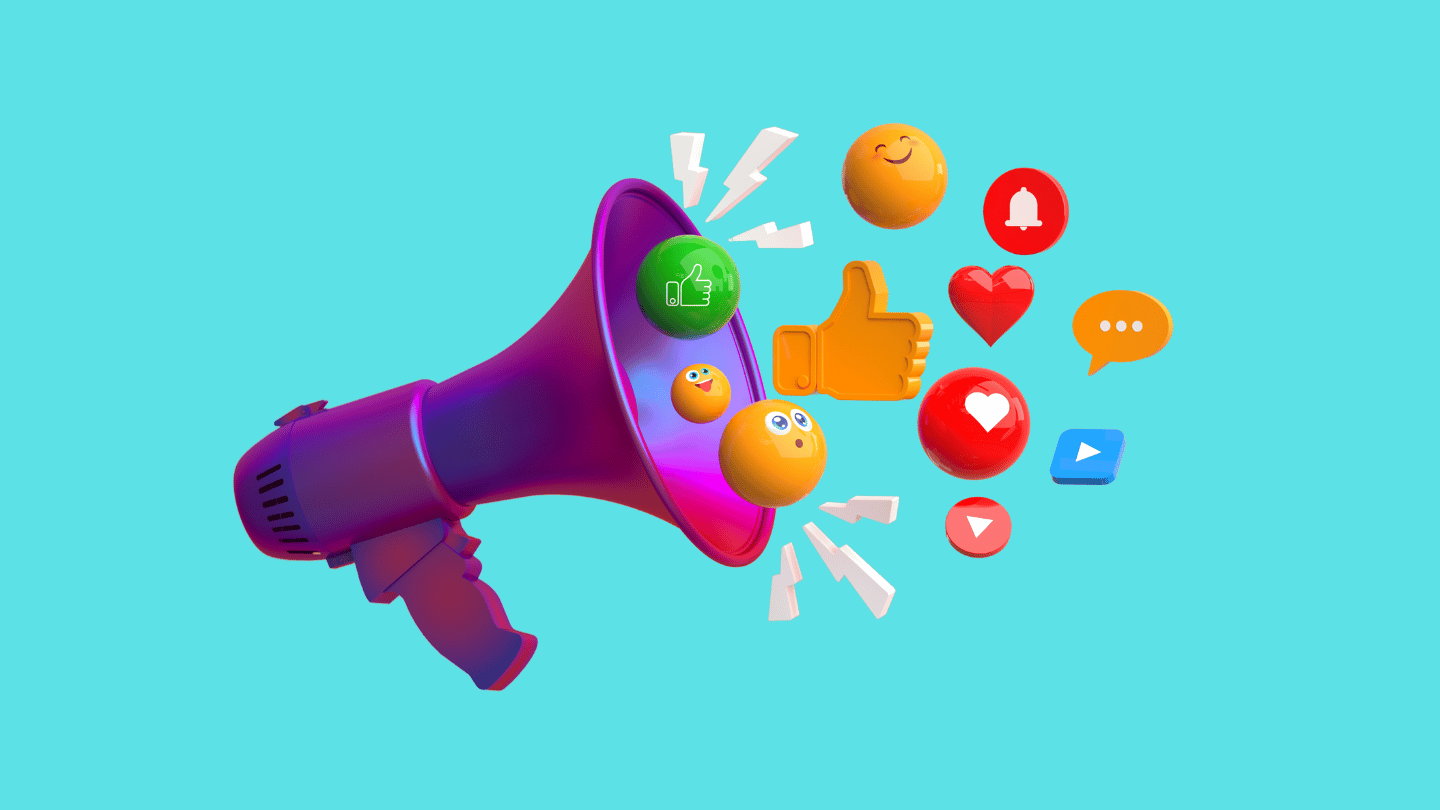Did you know that over 4.9 billion people worldwide use social media? That’s a staggering number of potential readers just waiting to discover your blog!
In today’s digital landscape, blogging and social media are inseparable allies. They form a powerful duo that can amplify your reach, engage your audience, and drive significant growth for your blog. But with so many platforms and strategies to choose from, where do you even begin?
That’s where this ultimate guide comes in. Whether you’re a brand-new blogger or a seasoned content creator, we’ll break down the essentials of leveraging social media to boost your blog’s visibility, build a loyal community, and achieve your blogging goals.
From choosing the right platforms to crafting a winning strategy and mastering the art of engagement, we’ll cover everything you need to know to make the most of this dynamic duo. Get ready to unlock the full potential of blogging and social media in 2024 and beyond!
Are you ready to dive deeper into the world of blogging and social media? Let’s explore the many ways you can leverage social platforms to take your blog to new heights.
Why Social Media is Essential for Blog Growth (Not Just Traffic)
If you think social media is just a place to share your latest blog post and hope for clicks, think again. Social media is a powerful tool that can transform your blog from a quiet corner of the internet into a thriving community hub. It’s about much more than driving traffic; it’s about fostering connections, building trust, and establishing your blog as an authority in your niche.
Here’s why social media is a game-changer for blog growth:
- Community Building: Social media platforms provide the perfect space for connecting with like-minded readers, sparking conversations, and creating a loyal following. By interacting with your audience, responding to comments, and sharing behind-the-scenes glimpses of your blogging life, you can foster a sense of belonging and turn casual readers into dedicated fans.
- Brand Awareness and Authority: Consistently sharing valuable content on social media helps you position yourself as a thought leader in your niche. As you share your expertise and insights, you’ll gain credibility and trust, attracting new readers who are eager to learn from you.
- Engagement and Feedback Loop: Social media provides a direct line of communication with your audience. You can ask for feedback on your blog posts, conduct polls and surveys, and learn more about your readers’ preferences and interests. This valuable feedback can help you tailor your content to better serve your audience and drive even more engagement.
- Content Repurposing and Amplification: Your blog posts can have a longer lifespan when shared on social media. You can repurpose your blog content into bite-sized social media posts, eye-catching visuals, or engaging videos, reaching a wider audience and maximizing the impact of your content creation efforts.
Each social media platform offers unique opportunities for connecting with your audience. By understanding the strengths of each platform and tailoring your content accordingly, you can create a multi-faceted social media strategy that drives significant growth for your blog.
Choosing the Right Social Platforms for Your Blog: Your Personalized Social Media Toolkit
Not all social media platforms are created equal, and that’s a good thing! Each platform caters to different audiences, content formats, and engagement styles. The key to maximizing your blog’s social media impact is choosing the platforms that best align with your goals, resources, and target audience.
Here’s how to strategically select your social media arsenal:
1. Know Your Audience:
- Demographic Insights: Research your ideal readers’ age, gender, interests, location, and online behavior. Where do they spend their time online? Which platforms do they use most frequently?
- Content Preferences: What types of content does your audience engage with? Are they drawn to visuals, long-form articles, short videos, or interactive polls?
- Pain Points and Challenges: What problems does your audience face? How can your blog content address those issues? Understanding their pain points helps you tailor your social media posts to provide solutions and attract the right followers.
2. Understand Each Platform’s Strengths and Weaknesses:
- Pinterest: Ideal for visual content like infographics, recipes, DIY projects, and fashion inspiration. It’s a long-term traffic driver due to its search engine-like nature.
- Instagram: Perfect for showcasing stunning visuals, behind-the-scenes glimpses, and short-form videos (Reels). It’s a great platform for building a visually appealing brand and engaging with a younger audience.
- Twitter: A fast-paced platform for sharing quick updates, news, opinions, and joining conversations. It’s ideal for connecting with journalists, influencers, and other bloggers in your niche.
- Facebook: A versatile platform for building communities, sharing long-form content, and running targeted ads. Facebook Groups can be a powerful tool for connecting with your audience and fostering discussions.
- LinkedIn: The go-to platform for professional networking and B2B marketing. If your blog targets professionals or businesses, LinkedIn can be a valuable tool for establishing authority and generating leads.
- TikTok: The rising star of short-form video content, perfect for capturing attention and engaging with a younger audience. If your niche aligns with this format, TikTok can be a great way to expand your reach.
- Other Platforms: Explore niche platforms like Reddit or industry-specific forums to connect with highly targeted audiences.
3. Align Platform Features with Your Content Format:
- If your blog focuses on visual content (photography, design, recipes), Pinterest and Instagram are likely to be your best bets.
- If you create long-form articles or tutorials, consider sharing snippets on Twitter with links back to your blog for further reading.
- If you have a strong personality and enjoy engaging in conversations, Twitter can be a great place to build relationships with your audience.
4. Consider Your Resources and Time Commitment:
- Be realistic about how much time and effort you can dedicate to managing multiple social media platforms.
- It’s better to excel on a few platforms than to spread yourself too thin and struggle to maintain consistency across multiple channels.
By carefully considering these factors, you can choose the right social media platforms that align with your blog’s goals, audience, and resources. This targeted approach will help you maximize your impact, connect with the right people, and drive meaningful results for your blog.
Crafting an Effective Blogging and Social Media Strategy: Your Roadmap to Success
Now that you’ve selected your social media platforms, it’s time to create a strategy that aligns with your overall blogging goals. A well-thought-out plan will help you maximize your efforts, track your progress, and achieve meaningful results.
Here’s how to create a winning blogging and social media strategy:
1. Set Clear and Measurable Goals:
- What do you want to achieve with your social media presence?
- Do you want to increase website traffic, grow your email list, boost brand awareness, or drive sales of your products or services?
- Make your goals specific, measurable, achievable, relevant, and time-bound (SMART). For example, instead of saying “I want more followers,” aim for “I want to increase my Instagram followers by 10% in the next three months.”
2. Develop a Content Calendar:
- Create a schedule outlining what content you’ll share on each platform and when.
- Consider your blog’s posting frequency and plan your social media posts to complement your blog content.
- Use a calendar tool (like Google Calendar or a social media scheduling app) to stay organized and ensure consistency.
- Mix up your content: Share a variety of formats, including text posts, images, videos, live streams, and polls, to keep your audience engaged.
- Repurpose blog content: Extract quotes, tips, or statistics from your blog posts and turn them into social media-friendly snippets.
3. Create a Cross-Promotion Plan:
- Drive traffic from social media to your blog: Include links to your blog posts in your social media bios, posts, and stories. Use enticing headlines and visuals to encourage clicks.
- Promote your social media channels on your blog: Add social sharing buttons to your blog posts and include links to your social profiles in your website’s footer.
4. Devise Engagement Strategies:
- Interact with your audience: Respond to comments, answer questions, participate in discussions, and show genuine interest in your followers.
- Spark conversations: Ask questions, share polls, and encourage feedback from your audience.
- Host live Q&A sessions or webinars: This is a great way to connect with your audience in real-time and provide valuable insights.
- Run contests or giveaways: Engage your audience and incentivize them to follow your social media channels.
Example Content Calendar:

Remember, your social media strategy should be dynamic and adaptable. As you track your results, be willing to experiment with different approaches and adjust your plan accordingly. The key is to find what works best for your blog and your audience.
Best Practices for Each Platform: Mastering Pinterest, Twitter, and Facebook for Blog Growth
While each social media platform has its own unique flavor and audience, certain best practices apply across the board. But to truly maximize your blog’s impact, it’s crucial to tailor your approach to each platform’s strengths and user expectations. Let’s dive into the strategies that will help you shine on Pinterest, Twitter, and Facebook.
Pinterest: Your Visual Content Powerhouse
- Create Eye-Catching Pins: Invest time in designing visually appealing pins that are clear, concise, and relevant to your blog’s content. Use high-quality images, bold text overlays, and compelling calls to action.
- Optimize Pin Descriptions: Craft keyword-rich descriptions that accurately reflect the content of your pin and include relevant hashtags. This will help your pins appear in relevant searches and reach a wider audience.
- Leverage Idea Pins: Utilize Pinterest’s Idea Pins feature to create multi-page visual stories, step-by-step tutorials, or product showcases. This immersive format can drive higher engagement and keep users on the platform longer.
- Join Group Boards: Collaborate with other bloggers and pinners by joining group boards related to your niche. This exposes your content to a larger audience and increases your reach.
- Utilize Rich Pins: Enable rich pins to add extra information to your pins, such as article titles, descriptions, and author information. This can improve click-through rates and enhance your credibility.
Optimizing for Pinterest SEO
- Optimize your Pinterest profile: Use keywords in your profile name, bio, and board descriptions.
- Use relevant keywords in pin titles and descriptions.
- Create fresh pins regularly to keep your content visible in search results.
- Link your pins to relevant blog posts.
- Track your Pinterest analytics to measure your performance and identify areas for improvement.
Creating Viral Pinterest Content
- Create pins that are visually appealing and shareable.
- Use high-quality images and design elements.
- Write catchy pin titles and descriptions.
- Pin consistently to keep your content in front of your audience.
- Promote your pins on other social media platforms.
Promoting Your Blog with Pinterest Ads
- Use Pinterest Ads to reach a wider audience and drive traffic to your blog.
- Target your ads based on interests, demographics, and keywords.
- Create compelling ad campaigns that promote your best content.
- Track your results and adjust your strategy as needed.
Twitter: Your Hub for Real-Time Conversations
- Craft Engaging Tweets: Keep your tweets concise, informative, and engaging. Use attention-grabbing headlines, relevant hashtags, and visuals to increase visibility.
- Join Twitter Chats: Participate in Twitter chats related to your niche to connect with other bloggers, industry experts, and potential readers. This can help you build relationships, share insights, and expand your network.
- Use Twitter Threads: Share longer-form content or tell a story in a series of connected tweets. This format can be more engaging than a single tweet and encourages deeper interaction.
- Retweet and Reply: Engage with your followers by retweeting their content, responding to comments, and participating in conversations. This builds relationships and fosters a sense of community.
Building Your Twitter Community
- Follow and interact with other bloggers and influencers in your niche.
- Participate in relevant Twitter chats.
- Share valuable content and insights.
- Ask questions and encourage discussion.
- Respond to comments and mentions promptly.
Using Twitter Analytics to Track Your Progress
- Track your Twitter analytics to measure your engagement, reach, and impressions.
- Identify your most successful tweets and learn what resonates with your audience.
- Use Twitter analytics to refine your strategy and improve your results.
Mastering the Art of the Twitter Thread
- Use Twitter threads to share longer-form content or tell a story.
- Keep each tweet in the thread concise and engaging.
- Use visuals to break up the text and add interest.
- End the thread with a call to action.
Facebook: Your Community Building Platform
- Create and Nurture a Facebook Group: Build a community around your blog’s niche by creating a Facebook group. This provides a space for your readers to connect, share ideas, and ask questions.
- Share Blog Posts in Relevant Groups: Promote your blog posts in relevant Facebook groups and communities. Be mindful of the group’s rules and avoid spammy behavior.
- Utilize Facebook Ads: Consider using Facebook Ads to target specific demographics, interests, and behaviors. This can be a cost-effective way to reach a wider audience and drive traffic to your blog.
- Go Live on Facebook: Host live Q&A sessions, interviews, or behind-the-scenes tours to engage with your audience in real-time. This builds a deeper connection and fosters trust.
Growing Your Facebook Group
- Promote your group on your blog and other social media channels.
- Invite your friends and followers to join.
- Share engaging content and encourage discussion.
- Host regular events and activities to keep members active.
- Moderate the group to ensure a positive and welcoming environment.
Creating Effective Facebook Ads
- Define your target audience and goals.
- Choose the right ad format (e.g., image ads, video ads, carousel ads).
- Write compelling ad copy and use strong visuals.
- Set a budget and track your results.
- Test different ad variations to see what works best.
Measuring the Success of Your Facebook Marketing
- Track your Facebook Page Insights to measure your reach, engagement, and impressions.
- Use Facebook Pixel to track conversions and measure the ROI of your ads.
- Analyze your data to identify trends and areas for improvement.
Measuring Success & Adapting Your Blogging and Social Media Strategy: Data-Driven Decisions for Maximum Impact
Numbers don’t lie. Tracking and analyzing your social media and blog performance is crucial to understanding what works, what doesn’t, and where to focus your efforts. This data-driven approach allows you to make informed decisions, refine your strategy, and achieve continuous improvement.
Here’s how to measure your success and adapt your strategy for maximum impact:
1. Define Your Key Performance Indicators (KPIs):
- Start by clarifying your goals. What metrics truly matter to your blog’s success? Is it website traffic, follower growth, engagement rate, email signups, or sales conversions?
- Choose KPIs that are relevant to your specific goals and track them consistently over time.
Examples of KPIs:
- Website Traffic: Track how much traffic your blog receives from each social media platform.
- Social Media Engagement: Measure likes, comments, shares, retweets, and other interactions on your social media posts.
- Follower Growth: Monitor the number of new followers you gain on each platform over time.
- Click-Through Rate (CTR): Track how often people click on the links you share in your social media posts.
- Conversion Rate: Measure how many social media users take a desired action, such as signing up for your email list or purchasing a product.
2. Use Analytics Tools to Track Your Progress:
- Google Analytics: A powerful, free tool for tracking website traffic and user behavior. Set up UTM parameters to track the source of your traffic and see which social media platforms are driving the most visitors to your blog.
- Native Platform Analytics: Each social media platform has its own analytics dashboard that provides insights into your post performance, audience demographics, and engagement metrics.
- Third-Party Tools: Consider using tools like Hootsuite, Buffer, or Sprout Social to manage multiple social media accounts and track your performance across platforms.
3. Analyze Your Data to Identify Trends and Insights:
- Look for patterns: What types of content perform best on each platform? When is your audience most active? Which social media channels drive the most traffic to your blog?
- Identify opportunities for improvement: Are there any social media platforms where you could be more active or engaging? Could you be creating more of the content that resonates most with your audience?
- Compare your performance to competitors: See what your competitors are doing on social media and identify areas where you could improve.
4. Adapt Your Strategy Based on Data:
- Don’t be afraid to experiment: Try different content formats, posting times, and promotional strategies to see what works best for your blog and your audience.
- Double down on what’s working: If a particular type of content or platform is performing well, invest more time and resources into it.
- Course-correct as needed: If something isn’t working, don’t be afraid to change your approach. Use your data to identify areas where you can improve and make necessary adjustments to your strategy.
Remember, social media is constantly evolving. Algorithms change, new features are introduced, and audience preferences shift. By staying up-to-date on the latest trends and regularly analyzing your performance, you can adapt your blogging and social media strategy to ensure continued growth and success.
Additional Tips for Leveraging Blogging and Social Media: Elevate Your Impact
Beyond the core strategies, there are additional tactics and insights that can help you maximize your blog’s social media presence. Let’s explore these bonus tips to further elevate your impact:
1. Mastering Social Media Etiquette:
- Be Authentic and Engaging: Share your personality and connect with your audience on a human level. Avoid overly promotional or spammy behavior.
- Provide Value: Offer helpful tips, insightful commentary, and engaging content that your audience will appreciate.
- Respect Others: Be respectful of others’ opinions and avoid engaging in negative or inflammatory discussions.
- Give Credit: Always credit the source when sharing someone else’s content or ideas.
- Engage in Conversations: Respond to comments and messages promptly, participate in discussions, and build relationships with your followers.
- Be Mindful of Frequency: Don’t bombard your followers with too many posts. Aim for a consistent but reasonable posting schedule.
2. Exploring Paid Social Media Advertising:
- Targeted Reach: Social media ads allow you to reach a wider audience and target specific demographics, interests, and behaviors.
- Cost-Effective: With a well-crafted ad campaign, you can achieve significant results with a relatively small budget.
- Boost Engagement: Use paid ads to promote your most popular content, drive traffic to your blog, or generate leads for your email list.
- Experiment with Different Formats: Try different ad formats, such as image ads, video ads, carousel ads, and stories, to see what works best for your audience.
3. Utilizing Social Media for Blogger Outreach and Networking:
- Connect with Influencers: Reach out to other bloggers, influencers, and industry experts on social media. Share their content, engage in conversations, and build relationships.
- Collaborate on Projects: Partner with other bloggers on joint projects, such as guest posts, social media takeovers, or co-created content.
- Attend Twitter Chats and Events: Participate in Twitter chats and attend industry events to connect with fellow bloggers and expand your network.
4. Leveraging Social Media Tools:
- Social Media Management Tools: Use tools like Hootsuite, Buffer, or Sprout Social to schedule posts, manage multiple accounts, and track your performance.
- Visual Content Creation Tools: Create eye-catching graphics and videos with tools like Canva, Adobe Spark, or Animoto.
- Social Media Analytics Tools: Gain deeper insights into your social media performance with tools like Google Analytics, Facebook Insights, and Twitter Analytics.
Elevate Your Blog with Social Media Synergy
By integrating these additional tips into your blogging and social media strategy, you can elevate your online presence, build a thriving community, and achieve your blogging goals.
Remember, the key to success lies in understanding your audience, creating valuable content, and fostering genuine connections. With dedication, creativity, and a willingness to adapt, you can harness the power of social media to transform your blog into a vibrant hub of information, inspiration, and community.









No Comments
Leave a comment Cancel